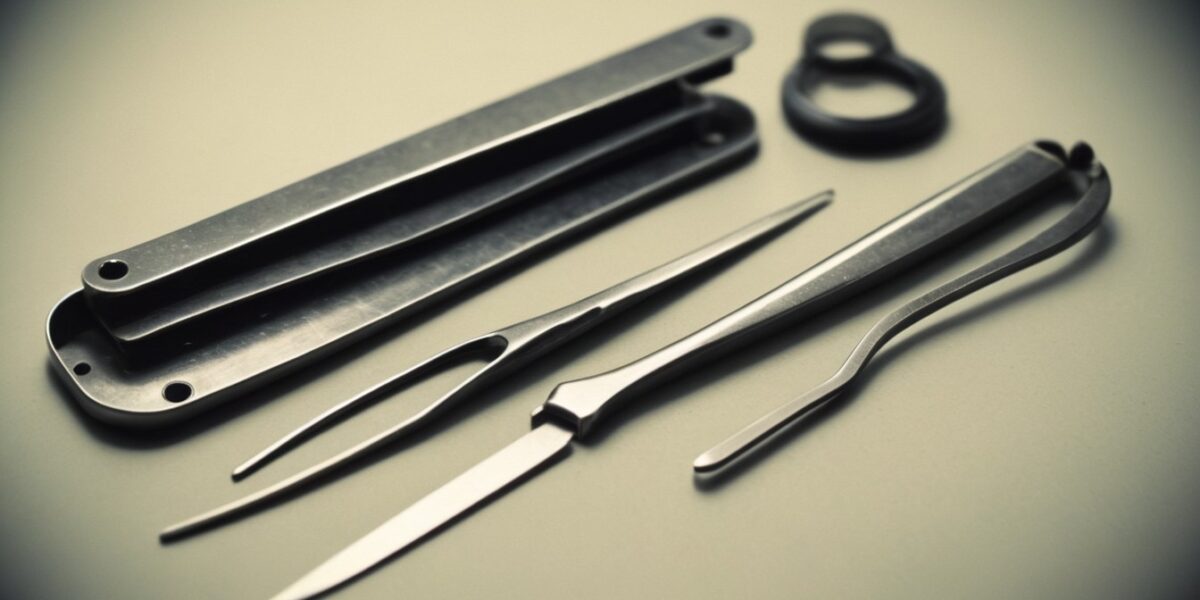Medicine has truly come a long way throughout history, with surgery leading the way.. Surgery was explored well before recorded history, with early surgeons learning and documenting the basic concepts of the human anatomy and organ systems.
Modern Surgery, as we know it today, wasn’t truly invented until the late 1800s, and even then people still died from blood loss, shock from pain and infection. Outcomes were generally poor, with more patients dying than surviving.
Early techniques were primitive and barbaric, with many patients dying even after surviving the initial surgery. Anesthesia was first used in 1846 and Antibiotics were only used for the first time in 1928. Surgeons would usually not clean their surgical instruments or change their bloody aprons as a sign of pride and would wear them as a badge of honor. The first steam sterilization system (Autoclave) was not perfected till 1879 by Charles Chamberland and Carbolic acid was used as one of the first antimicrobial agents in 1890 as a disinfectant on surgical incisions to prevent postoperative infections by Dr. Joseph Lister.
What was learned from centuries of trial and error, research and experimentation led to procedures that are not only commonplace today but highly effective and safe. These advances continue as robotic surgery, laser surgery, microsurgery, neuro surgery and minimally-invasive surgery dominate the surgical fields. These advances now allow surgeons to treat many different kinds of conditions once thought to be untreatable, inoperable or un-survivable. These advances have helped create less blood loss, less pain, less medication and addiction, quicker recovery times, shorter hospitalization stays, fewer scars and stitches, improved outcomes and minimized complications.
The 19th century is regarded by many as the “birth of Modern Surgery” as we know it. It was a century marked by many new discoveries which enabled many of the surgical procedures still in use today. For example, the first transfusion of human blood was performed in 1818, in 1846 Ether was used for the first time as an anesthetic in a surgery to remove a neck tumor, in 1890 Carbolic Acid was used as a microbicidal agent to disinfect surgical incisions and prevent postoperative infections, in 1895 first X-ray was performed in Germany followed by the first successful open-heart surgery to repair a stab wound in 1896.
It wasn’t until the 20th Century that the likelihood of surviving surgery was greater than the likelihood of dying, during, or as a result of surgery.
During the 20th century, major advances in surgery made surgery safer and more effective, this enabled the treatment of a wider range of medical conditions, including organ transplants. The first plastic surgery was performed on a burned sailor in 1917, in 1967 the first heart transplant surgery was performed, followed by the first ever Robotic assisted surgery in 1985.

In the 21st Century, surgeons have more than 2,500 different surgical techniques in their arsenal. The best way to describe surgery in the 21st century is, more complex and Safer. Every year, innovations are introduced that allow surgeries that once required lengthy hospital stays to be done on an outpatient basis. In 2000 the da Vinci Robotic Surgical System was approved by the U.S. Food and Drug Administration (FDA). The world’s first full-face transplant was performed in 2010, and in 2022 the first transplant of a genetically modified pig’s heart was implanted into a human patient.
Our medical processes have progressed from leeches and crude saws to anesthesia, antibiotics and even Robotics. Now, our modern medical technology gives us the power to cure diseases and heal patients in ways we could never have imagined before.
With ever changing and modernization of Surgical Instruments comes the challenge keeping the patients safe while safely reprocessing these complex instruments. And this is where Sterile Processing (SP) comes in. SP has played a monumental role in surgical patient safety when it comes to the advancement of these complex surgical instruments.
The more complex the surgery, the more complex are the instruments and devices used to perform that surgery safely, and the more difficult it is to properly and safely reprocess them for the next patient.
All surgical instruments are complex devices that require precision machining, better quality materials like surgical grade Stainless Steel, Tungsten Carbide or Titanium. Most instruments are handmade, meticulously tested and require very special reprocessing protocols. Some instruments are used for general use while others are designed for very specific procedures, with many of the modern instruments being powered, electrical and fiber optical works of art. This can’t be cheap by any means, with most Hospitals and Healthcare facilities spending up 40% of their annual budgets on Instrument purchase, lease, rent, repair or replacement. All of this requires that instruments are reused many times per day, for many years to recoup huge investments on the part of the Hospitals and other Medical facilities.
It wasn’t till the 1940’s that the Sterile Processing Department was born, and since then, favorable patient outcomes have only increased. Sterile Processing (SP) is the art of taking used, reusable surgical instruments and reprocessing them until they are safe and ready to be used on another patient in surgery, safely. This process occurs in the Sterile Processing Department within a Hospital, Medical Center or a Surgical Center. This is where all surgical instruments and equipment is processed, cleaned, sterilized and stored for all future Surgical procedures.
When it comes to medicine, cleanliness and sterilization mean progress and survivability.


